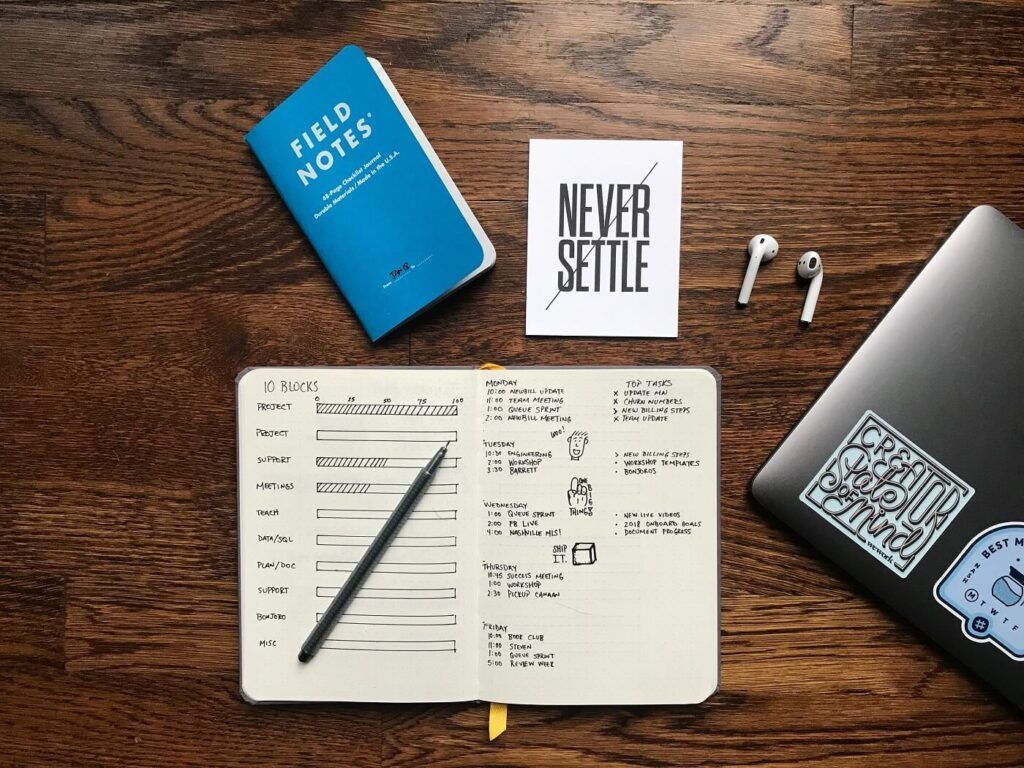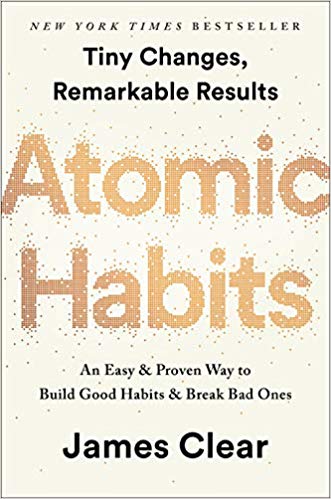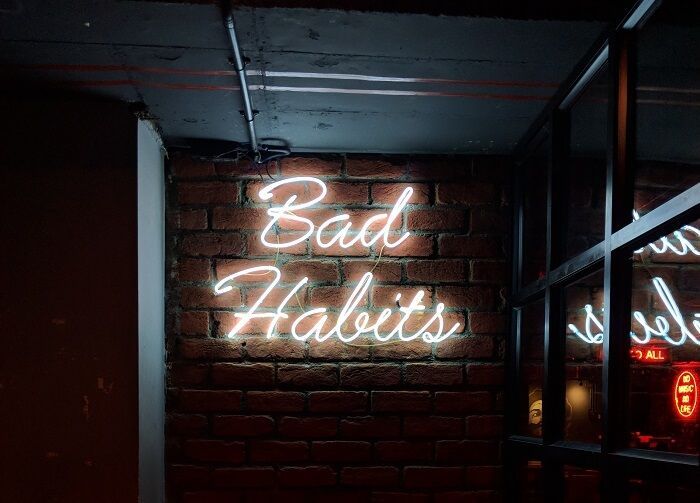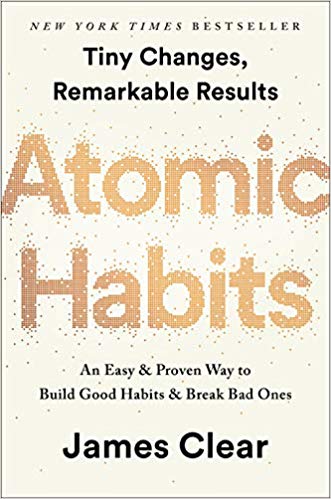Book Summary: Atomic Habits by James Clear

When I see a good movie, hear nice music, or eat a good meal, I always decide: that’s what I want to do. I want to write, compose, and cook. Most of the time, of course, I quit the bold idea the next day. Sometimes, though, I go into planning, setting milestones, and starting to work on the distant goal. As the enthusiasm of freshness fades away, I regularly stop trying and look forward to the next good movie, music, or special dinner.
Why can’t I stick to these bold goals? How can I stay motivated and what should I do every day?
In Atomic Habits, James Clear showed me a new perspective. Thinking in systems instead of goals, habits instead of things to do. He pointed out how to exploit our opportunities with easy habits instead of forced obligations.
In this article, I summarize the essence of the book. If you haven’t read the volume yet and don’t want to spoil the reading experience by learning the details this is the place to stop.

What is a habit?
A habit is a routine or behavior that we perform regularly and in many cases automatically. According to James Clear, our quality of life is largely determined by the quality of our habits.
Atomic habits
The atomic habit is not just a catchy buzzword, which tried to move up sales numbers for the book. In most cases, we do not need radical changes for development, but small, atomic changes. These changes, atomic habits add up and can ultimately lead to great performance in any field.
Just like it did in the case of Dave Brailsford. Brailsford was entrusted with a serious task in 2003 to improve the performance of British racing cyclists. Before Brailsford, the British were not considered to be the best in cycling.
Dave Brailsford pulled British cycling out of the pit using the small-profit method and flew it to the top of the medal table.
He did not introduce radical changes but looked for small areas for improvement. He redesigned the seats to make them more comfortable. He gave heated pants to the cyclists to keep their muscles constantly warm. With the help of a specialist, he taught the team the proper handwashing technique to avoid catching a cold.
After starting working together in 2004, the British had already won two gold medals at the Athens Olympics, their best result since 1908. Under Brailsford’s leadership, they lead the sport’s medal table with 8-8 gold in the next two Olympics.
If you only get 1% better every day, you’ll be 37 times better in a year.
Habits are compounding
Habits are the compound interest in self-improvement.
If you eat a box of ice cream for dinner, you’ll hardly notice a change tomorrow, just as you won’t be stronger after a single workout. Over time, however, habits add up. Ice cream appears in the form of extra weight and workouts as extra muscle.
Habits can work for you, but also against you.
The more small areas you can improve, the more progress you can make. The only problem with this tremendous development is that we don’t anticipate when our habits will come together.
After a while, our development stalls, we reach our limits and we will be disappointed.
Systems instead of goals
"You are not rising to the level of your goals, you are falling to the level of your systems."
The goals are always the results we want to achieve.
Systems are about the process that leads to the achievement of goals.
Want to make $ 1 million? You can't do it right away. You need to create a system within which you test different product ideas, run marketing campaigns, and build a team.
You can only achieve the same goals by using systems.
That’s why you build systems instead of setting goals.
Once I reach my goals, I'll finally be happy.
Many respond when we are asked about their happiness.
Goals limit happiness because they always make it dependent on the next milestone. Once we reach a goal we will soon find a new one and start all over again.
True long-term thinking is goal-free thinking.
Identity-forming habits
James Clear distinguishes three levels of behavior change:
- Identity
- Process
- Result
Most of our goals require result-oriented behavior. We want to lose 10 pounds, read 5 books, and for that, we measure our weight daily and log the number of pages read.
Instead of developing result-oriented habits, it is worthwhile to form identity-based habits. The best source of motivation is when a habit becomes part of your self-image.
Do not want to read more, become a reader!
The more times you repeat a behavior, the more you reinforce the identity associated with the habit.
Using identity-forming habits, we form a feedback loop.
Your habits affect your identity.
Your identity influences your habits.
The four stages of habit formation
The author distinguishes 4 levels of habit formation:
- Signs: Circumstances that trigger the habit (time, place, emotional state…)
- Craving: A source of motivation.
- Response: The habit you do.
- Reward: Satisfying cravings
James Clear helps us develop better habits and avoid bad habits with advice on the four stages of habit formation.
The four rules needed to develop better habits and change behavior are:
- Rule 1 (Signs): Make it clear!
- Rule 2 (Craving): Make it attractive!
- Rule 3 (Response): Make it simple!
- Rule 4 (Reward): Make it satisfactory!
Reversing the four rules needed to change behavior to leave bad habits:
- Rule 1 (Signs): Make it invisible!
- Rule 2 (Craving): Make it uncomfortable!
- Rule 3 (Response): Make it complicated!
- Rule 4 (Reward): Don't be satisfactory!

Rule 1 - Make it clear!
The signs that trigger action becomes part of our subconscious when a habit develops.
An American teacher, after changing jobs and being employed by a multinational company, found himself often warning his colleagues in the bathroom to wash their hands thoroughly.
Although the environment (school - company) has changed, there were still signs that have produced the habit.
Habit score indicator
For Japanese trains, critical elements are checked and named aloud before departure according to a pre-determined routine. (Platform is clean. Doors are closed. Departure!…)
The method of pointing and naming is used in several areas and is intended to reduce the possibility of errors.
What we pay special attention to, we pay more attention to.
It is no different with habits either.
It is also worth naming and labeling your habits on the model of pointing and naming.
Create a scorecard for your habits!
Put + sign next to the positive habits and - next to the habits with a negative effect. Neutral habits can go with =.
Somehow this is what an average morning looks like when I classify my habits:
- awakening +
- turn off the alarm without snooze +
- scroll through emails, scroll feed -
- brushing teeth +
- dressing +
and so on.
Intention to implement
The best way to learn a new habit is to describe exactly when and where you are going to do it.
I will read every night at 7 o'clock in the armchair.
Accumulation of habits
Diderot, the French philosopher, and writer, was not particularly rich. However, once after completing a larger order, he rewarded himself with a red scarlet cloak. The cloak didn’t fit his furniture, so he bought new things. One purchase led to the next.
The phenomenon, known as the Diderot effect, can also be used to develop habits.
Observe your existing habits and build a new one on your existing one.
The strength of morning routines is also given by the accumulation of habits.
Awakening, brushing teeth, gymnastics, meditation…
One habit follows the other.
Motivation is overrated, the environment matters
...'disciplined' people are better at structuring their lives in a way that does not require heroic willpower and self-control.
If you only make a habit when you feel like it, you will hardly be successful in adopting the routine. Motivation is an unpredictable variable, which is not worth building on. It is recommended to create an environment that helps you practice the habit you want to learn.
We can pair a habit with a given location.
By taking advantage of the environment, James Clear said it is worth following the one-place-one-use rule. Therefore, it is not a good idea to work in the same bed where you would otherwise sleep.
Do you have a small room?
Divide into activity zones.
Read in the armchair, work at the table, relax in bed!
The environment is also important because with self-control we can only get to one point in the field of habits. Once we see a cake (sign), we start wanting it (craving). If we want to plan lasting habits, we can’t trust our self-control because it only works in the short term.
We can leave bad habits, but if long-established routines are ingrained in our brains, we will never forget the signs associated with the habit. Clear suggests that we omit signs that are related to bad habits.

Rule 2 - Make it attractive!
The more attractive an option is, the more likely you are to be able to develop habits.
The second rule of behavior change is difficult to follow if our goal is to develop positive habits.
Complete industries were built to provide extraordinary stimuli and joyful experiences. Billboards with models modified beyond recognition, social media pushing the best moments into our faces, and fast food dishes with their flavor enhancers make normal, casual experiences almost boring.
They affect the characteristics that appeal to us.
It is difficult for us to reject these possibilities.
Our behavior is controlled by a dopamine-driven feedback loop. Your dopamine level goes high every time you think an opportunity can reward you.
How can we play the second rule of changing behavior?
Building temptations on top of each other
An American engineer loved watching Netflix, but there was no way he could get himself to exercise. Satisfied with the situation, he took an exercise bike and connected it to the TV. To turn on and operate continuously, the TV had to spin at a specified speed. Otherwise, the TV is turned off.
Link the activity to your existing habit!
According to the Premack principle, more likely behaviors support less likely behaviors.
Family and friends
Our environment not only influences our behavior in the form of beds, refrigerators, and TVs. One of the deepest human desires is belonging to the community.
1. Imitate our immediate environment.
Friends and family have an unintentional influence on us. Our environment influences our IQ, can contribute to obesity, and is also reflected in our way of speaking.
Because of our sense of belonging to a tribe, we are willing to adopt the rules of the tribe.
2. Imitate the mass
Although we do not know the commenter who writes a mean comment about a restaurant, we still read his opinion and it influences our decision.
3. We imitate the powerful
We research the portfolios of successful investors, copy the habits of esteemed people.
How do you find and correct the causes of your bad habits?
Take an example of the most popular habit-forming applications. You use Facebook because it helps you stay in touch, Uber makes transportation convenient, and Airbnb helps you by listing reliable and affordable accommodations.
Habit-forming products do not create a new craving but build on an existing one.
Habits become more attractive when paired with positive feelings.
Rule 3 - Make it simple!
Move slowly, but never backward!
Jerry Uelsmann divided his students into two groups during a photography course at the University of Florida. Members of one group had to take as many pictures as possible by the end of the semester, while the other group was tasked with taking a single but perfect picture.
In evaluating the course, most of the best images came from the quantitative rather than the qualitative group.
The perfect is the enemy of the good - Voltaire
While the quality-conscious group was constantly planning and focusing on the foundations, the group with the quantity in mind had the opportunity to practice, make mistakes, and improve.
While planning is important, we often tend to use it for procrastination.
Start with practice, not strive for perfection!
Two-minute rule
For most activities, there is a defining moment when you decide whether to practice or procrastinate. When creating simple habits, it is worth taking advantage of the opportunity in the given moment.
According to the two-minute rule, it is not necessary to exercise for a long time or with full effort initially. It is enough to start the habit you want to learn.
- Write for two minutes.
- Drive to the gym, train for two minutes, and go home!
- Do you have to study? Don’t plan your agenda, just open your notes!
Once you start it is much easier to continue.
Rule 4 - Make it satisfactory!
The rewarded habit is repeated the punished stops.
However, rewarding habits is not as simple as we might first think. We value the reward of a given moment more than the profit due in the future. This temporal inconsistency is essential for survival (we need food and shelter), but it pushes long-term goals behind the rewards of immediate benefit.
Good habits are a cost in the present, while the consequences of bad habits will only be experienced in the future.
It is worth improving our long-term successful habits with immediate rewards to maintain our motivation in the short term.
Habit tracking
Habit tracking is one way to reward the development of good habits with an immediate reward. The documentation of the completed event can serve as a motivation, so following a habit becomes a kind of reward.
Sticking to a good routine is always one vote for the person you want to become.
The difficulty with following a habit is that it requires learning two habits. First, you need to follow the tracking itself, and second, you need to work on the habit you want.
What happens if our series is interrupted?
Life always intervenes.
We need to take note of this.
James Clear suggests not to miss two consecutive days after breaking a successful series.
Let's try to start the next series as soon as possible!
Extra tips
When does genetics matter and when doesn't?
Regardless of habits, our abilities sometimes limit our achievable results. Swimmer Michael Phelps won more gold medals than anyone else before him. With a professional team, a precise diet, and an incredible amount of training, Phelps’s physique is not negligible.
Phelps is tall, his torso long, just like his arms. It has a perfect shape for swimming. However, if he switched sports and measured himself as a long-distance runner, he probably wouldn’t even stand out from the crowd.
A long torso and height would quickly turn an advantage into a disadvantage.
If you want to maximize your chances of success, choose the area that suits your abilities!
In addition to physical endowments, our personality also plays an important role. Choose a habit that suits you, of course, rather than one that is popular.
Areas, where you are genetically predisposed or successful, are areas where habits are most likely satisfactory to you.
Ask yourself the following questions before selecting an area:
- What do I see as entertainment but others consider as a job?
- What is it that helps me lose my sense of time? When do I get into flow?
- Where are my results better than average?
- What kind of person am I?
Goldilocks rule
People are most motivated when they can work on tasks that are at the limit of their abilities.
Not too heavy.
Not too easy.
They are just right.
My opinion on Atomic Habits
We may come across a book on efficiency or time management in which the writer introduces a useful and new formula in a few pages and then proves the truth with hundreds of pages of unnecessary stories.
Reading James Clear’s Atomic Habits made me feel as if he had consciously collected all the tips in such books and consisted them into a system without unnecessary stories.
The author's explanations are frivolous, the short illustrative stories are meant to prove how the formula works, not to increase the word count.
Reading the first lines of the chapters, I always had a couple of questions that questioned the practical usability of a formula that worked in theory. (Example: Use a place for a single activity. - But what if our room is small?).
James Clear answered my questions in almost every case as well.
Atomic Habits is a well-researched, enjoyable, and potentially mind-forming book. The question is just what to do with our lessons.





